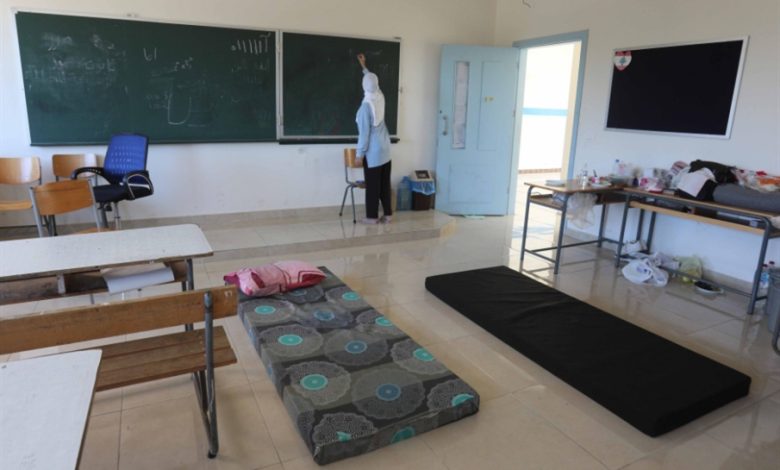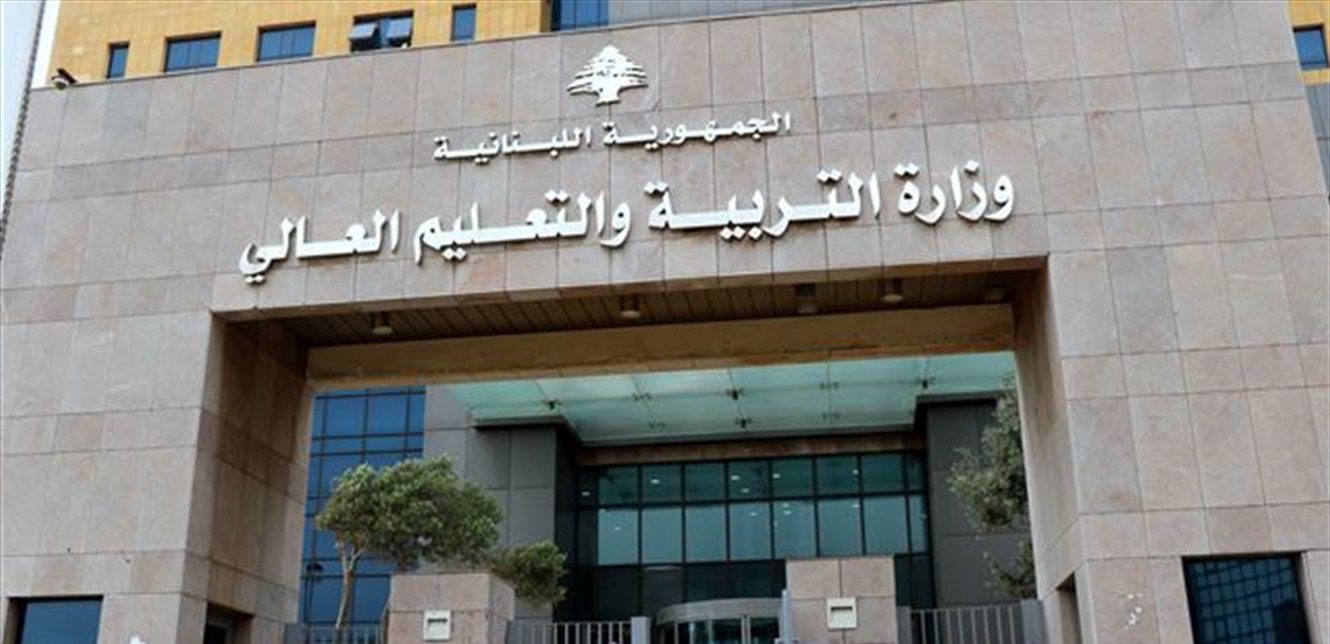وزراء في الكوما بعد شهرين على النزوح: المساعدات الخارجية تغطّي 20% من الاحتياجات
على مشارف انقضاء الشهر الثاني من النزوح الكبير، لم تشكّل المساعدات العينية التي وصلت إلى لبنان من مصادر مختلفة أكثر من 15 إلى 20% من احتياجات النازحين وفق لجنة الطوارئ الحكومية. وفيما لبّت المبادرات الإغاثية الفردية جزءاً كبيراً من هذه الاحتياجات، كما جرت العادة عند كل أزمة، فعّلت الجهات المعنية في حزب الله عملها الإغاثي بعد غيابٍ طبع الأسابيع الأولى من النزوح. وحدها الدولة بقيت بعيدة عن مواطنيها، كما هي العادة أيضاً، وكما يبدو واضحاً من استقالة عددٍ من الوزراء من أدوارهم، ومثلهم بعض المحافظين ورؤساء البلديات، باستثناء أداء وزارة الصحة، ولجنة الطوارئ الحكومية على مستوى التنسيق وتوزيع المساعدات وجمع الداتا، بمساعدة متطوّعين.
فوزير الداخلية، ولأسبابٍ غير مفهومة، انسحب من لجنة الطوارئ الحكومية، رغم أن وزارته أساسية. والتقصير يمتد إلى وزارة الشؤون الاجتماعية التي يُفترض أن يكون لها مندوبون في المراكز، وهو ما لم تفعله، فيما آثرت تقديم المساعدات الإغاثية بشكلٍ منفصل عن لجنة الطوارئ. وربما لا يعلم وزير الشؤون الاجتماعية أن مساعداتٍ خرجت من مخازن تابعة للوزارة ووُزعت بأسماء أطراف سياسية، مثلما هي الحال مع الهيئة العليا للإغاثة. كذلك، يُسجّل غياب تام لوزارة الخارجية والمغتربين عن ملف النزوح، إذ لم تُلمس فعالية الدبلوماسية اللبنانية عبر سفراء في العالم (راتب السفير لا يقل عن 10 آلاف دولار شهرياً)، وكذلك الملحقون الاقتصاديون الذين تربطهم علاقات مع رجال أعمال في الخارج في مختلف القطاعات. ففي ظروف كهذه، كان منتظراً، أن يتجنّد هؤلاء، ويستثمروا علاقاتهم في الدول التي يقيمون فيها، واستنفار المغتربين لاستقدام مساعدات عينية ومالية. أما الطامّة الكبرى، ففي وزير الاقتصاد الذي طار إلى الولايات المتحدة منذ ثلاثة أسابيع في وقت يواجه البلد عدواناً، منهمكاً في تهنئة الرئيس الأميركي المنتخب.
منذ عامٍ، يُفترض أن الدولة اللبنانية تنتظر عدواناً كالذي شنّه العدو الإسرائيلي في 23 أيلول الفائت. وهي حكماً لم تُفاجأ بشح التمويل الدولي على الصعيد الإغاثي للنازحين. لا بل كانت تتوقّعه، وعلى علمٍ بتواطؤ المجتمع الدولي على عدم مساعدة النازحين من الجنوب والبقاع والضاحية الجنوبية، إذ لمست على مدى عام أن أحداً في الخارج لم يستجب لنداءاتها لإغاثة 100 ألف نازحٍ جنوبي تركوا قرى وبلدات الحافة الأمامية مع بدء تفعيل الجبهة عسكرياً. رغم ذلك لم تعد العدّة لتمويل خطة الطوارئ، ومع تحوّل السيناريو المُحتمل إلى أمر واقع، مرّت سبعة أسابيع قبل الاتفاق على صرف سلفة مالية بقيمة 150 مليون دولار لزوم تقديم مساعدات إغاثية، بعد ضغط نواب حركة أمل وحزب الله بهذا خلال جلسة مع الوزراء الأعضاء في لجنة الطوارئ الحكومية.
تحدّي التدفئة أولوية والوضع لا يزال كارثياً لنحو مليون نازح في المنازل
واقع الحال اليوم في مراكز الإيواء ليس بالسوء الذي كان عليه قبل أسابيع. ففي أماكن عدة تم تأمين الأساسيات، إلا أن الاحتياجات لا تزال كبيرة، وأحد التحديات الأساسية يتمثل بتأمين التدفئة، فيما لا يزال الوضع كارثياً للنازحين في المنازل، وعددهم نحو مليون.
وتبيّن أحدث جردة للمساعدات العينية التي تسلّمها لبنان من الدول والمغتربين والمنظمات الدولية عبر المطار والمرفأ، أنّها تتوزع بين مساعدات طبية (أدوية ومستلزمات) تسلّمتها وزارة الصحة، ومساعدات إيوائية وغذائية. ويتم توزيع المساعدات عبر وزارة الصحة، مجلس الجنوب، الهيئة العليا للإغاثة، المؤسسات الدولية ولجنة الطوارئ الحكومية. وفي ما خص المساعدات التي تُشرف عليها الأخيرة فقد بلغ مجموعها حتى الآن: 40 ألفاً و662 صندوقاً غذائياً، وُزّعت 90% منها، 15 ألفاً و735 صندوق مواد نظافة وُزّعت 90% منها، و17938 صندوق إيواء وُزّعت 74% منها، و2774 خيمة وُزّعت 54% منها، و39615 بطانية وفرشة وُزّعت 61% منها. ويتم إرسال المساعدات عبر شاحنات الصليب الأحمر، أو تلك التي يستأجرها على نفقته، إلى غرف عمليات المحافظات الثماني، ليتولى المحافظون توزيعها على النازحين عبر خلايا الطوارئ عند القائمقامين أو البلديات أو اتحادات البلديات. إلا أنّ المشكلات تظهر في المرحلة الثانية من العملية، أي التوزيع من المحافظة إلى البلديات، ومنها إلى المدارس في نطاقها، وداخل المدارس على النازحين. فيما شكا نازحون في مختلف المناطق من مدراء مدارس غير متعاونين لا يسلّمون المساعدات إلا بالتقسيط، وآخرين يخزّنون الفرش ولا يوزعونها، ومن موظفي إحدى البلديات التي استحوذ موظفوها على جزء من المساعدات. وفيما يقع المحافظون ورؤساء البلديات تحت وصاية وزارة الداخلية، لم تتحرك هذه الأخيرة حتى للتحقيق في أيّ من هذه الشكاوى.
1,3 مليون نازح و1017 مركز إيواء
أدّى العدوان الإسرائيلي على لبنان إلى نزوح أكثر من مليون و200 ألف شخص، نزل نحو 200 ألف (نحو 45 ألف أسرة) في 1017 مركز إيواء وصلت غالبيتها إلى قدرتها الاستيعابية القصوى، وتتوزع على 17 مؤسسة تعليمية رسمية وخاصة في محافظة النبطية و71 في محافظة الجنوب و109 في الشمال و383 في جبل لبنان و158 مركزاً في محافظة بيروت و122 في البقاع و59 في بعلبك الهرمل و98 في عكار، إضافة إلى ملاجئ وجمعيات ونوادٍ ودور عبادة وفنادق.
المصدر: ندى أيوب – الأخبار
Ministers in Coma After Two Months of Displacement: Foreign Aid Covers 20% of Needs
As Lebanon approaches two months of large-scale displacement due to the escalating war, the government’s Emergency Committee reports that the foreign aid received from various sources has only covered 15–20% of the displaced persons' needs. While individual humanitarian initiatives have addressed a significant part of these needs, Hezbollah has activated its relief operations after an initial delay in the first weeks of the displacement. However, the state remains largely absent, as evidenced by the resignation of several ministers, governors, and mayors, with the exception of the Ministry of Health and the Emergency Committee, which have coordinated aid distribution and collected data with the help of volunteers.
State Absence and Individual Humanitarian Efforts
The Minister of the Interior withdrew from the Emergency Committee for unexplained reasons, despite the importance of his ministry’s role in this crisis. The Ministry of Social Affairs also failed to deploy representatives at shelters, instead distributing aid separately from the emergency committee. Furthermore, some aid was reportedly distributed under the names of political parties, a situation similar to that of the Higher Relief Commission. Meanwhile, the Ministry of Foreign Affairs and Emigrants has been absent from the displacement file, as no significant diplomatic efforts were made through ambassadors or economic attaches to mobilize foreign aid. Despite their positions and connections to the Lebanese diaspora, the embassy staff did not utilize their networks to procure either in-kind or financial assistance.
Challenges and Negligence in Crisis Management
Since the Israeli assault on September 23, the Lebanese state had been fully aware of the expected shortage in international humanitarian funding for the displaced. While the Lebanese government anticipated this situation, it was clear that there was a deliberate lack of international support for displaced persons from the south, the Bekaa, and the southern suburbs. Despite continuous appeals, Lebanon received no substantial foreign response to the plight of over 100,000 displaced people who fled southern villages at the onset of the conflict. The situation worsened as it took seven weeks before an agreement was reached to release an emergency fund of $150 million, after significant pressure from the Amal Movement and Hezbollah members within the Emergency Committee.
Basic Challenges for the Displaced: Prioritizing Heating and Shelter
While the situation in shelters has improved from the initial weeks of displacement, the needs remain significant, with one of the primary challenges being the provision of heating as the cold season approaches. The situation remains disastrous for those displaced in homes, estimated at around one million people.
Aid Distribution and Challenges in Execution
According to the latest report from the Emergency Committee, Lebanon has received large quantities of aid, including medical supplies (medications and equipment), as well as shelter and food assistance. A total of 40,662 food boxes have been distributed, with 90% of them reaching the displaced, 15,735 hygiene kits (90% distributed), 17,938 shelter boxes (74% distributed), 3,774 tents (54% distributed), and 39,615 blankets and mattresses (61% distributed). Aid is being transported by the Red Cross and private trucks to provincial operations rooms, where governors distribute it through emergency cells in municipalities and schools. However, significant issues have been reported in the second phase of the distribution, particularly at the local school level, where some school directors are not cooperating or have been hoarding aid. Additionally, some municipal staff have taken part of the aid. Despite the Ministry of the Interior being responsible for investigating such complaints, no action has been taken.
1.3 Million Displaced and 1,017 Shelters
The Israeli assault on Lebanon has led to the displacement of more than 1.3 million people, with around 200,000 displaced individuals (approximately 45,000 families) finding shelter in 1,017 centers. Most of these shelters have reached their maximum capacity. These centers are distributed across several regions, including the southern provinces, Beirut, Bekaa, and Mount Lebanon, with additional shelters in mosques, churches, hotels, and community centers.
Translated by economyscopes team
 سكوبات عالمية إقتصادية – EconomyScopes إجعل موقعنا خيارك ومصدرك الأنسب للأخبار الإقتصادية المحلية والعربية والعالمية على أنواعها بالإضافة الى نشر مجموعة لا بأس بها من فرص العمل في لبنان والشرق الأوسط والعالم
سكوبات عالمية إقتصادية – EconomyScopes إجعل موقعنا خيارك ومصدرك الأنسب للأخبار الإقتصادية المحلية والعربية والعالمية على أنواعها بالإضافة الى نشر مجموعة لا بأس بها من فرص العمل في لبنان والشرق الأوسط والعالم




